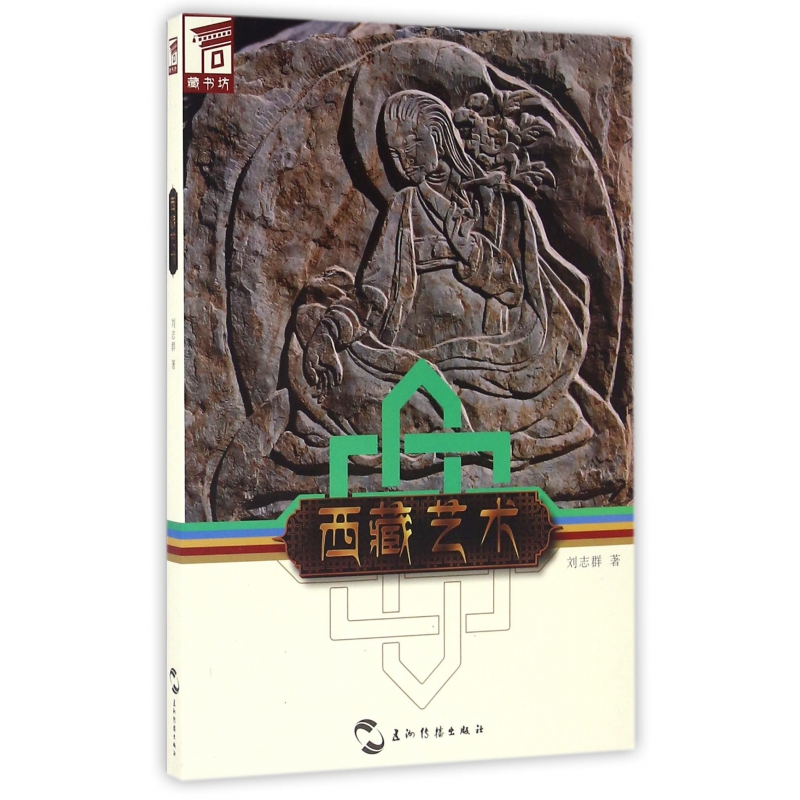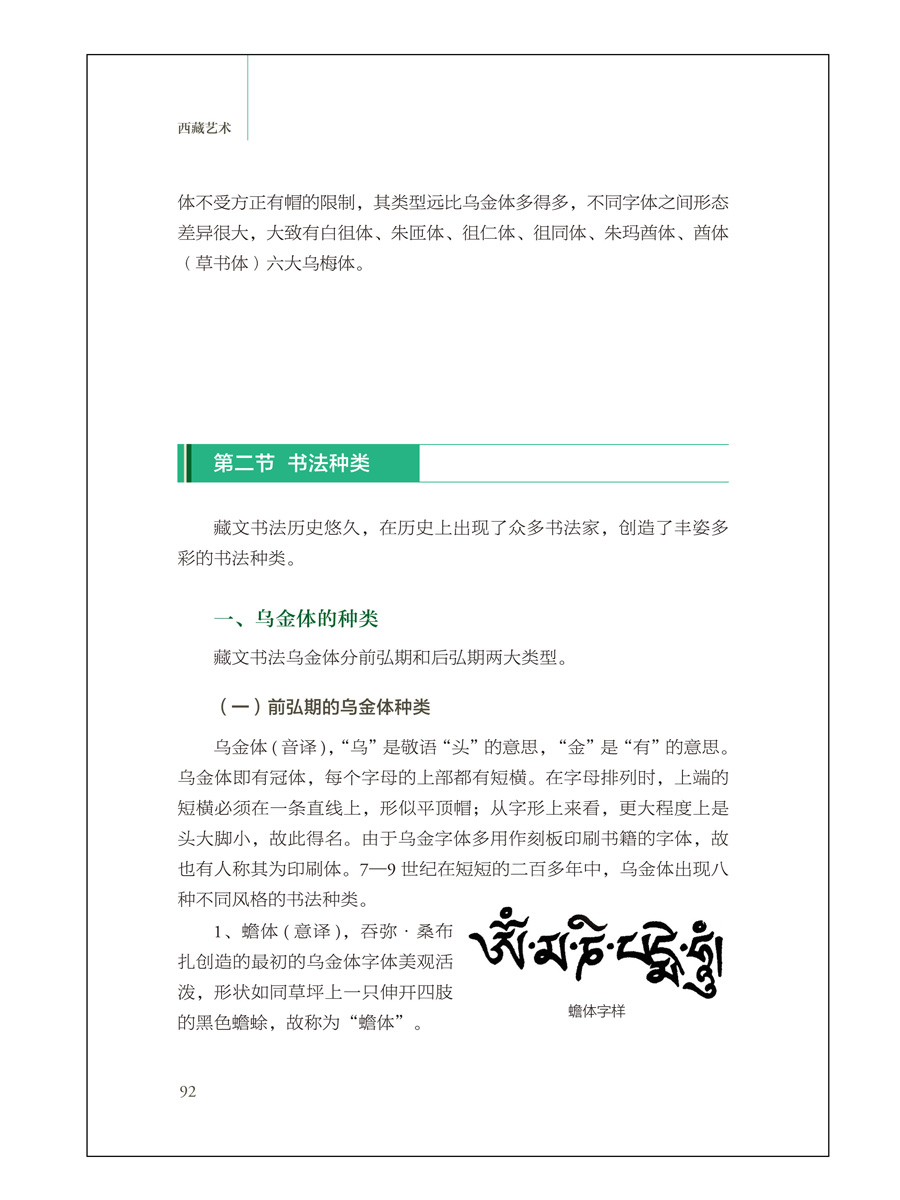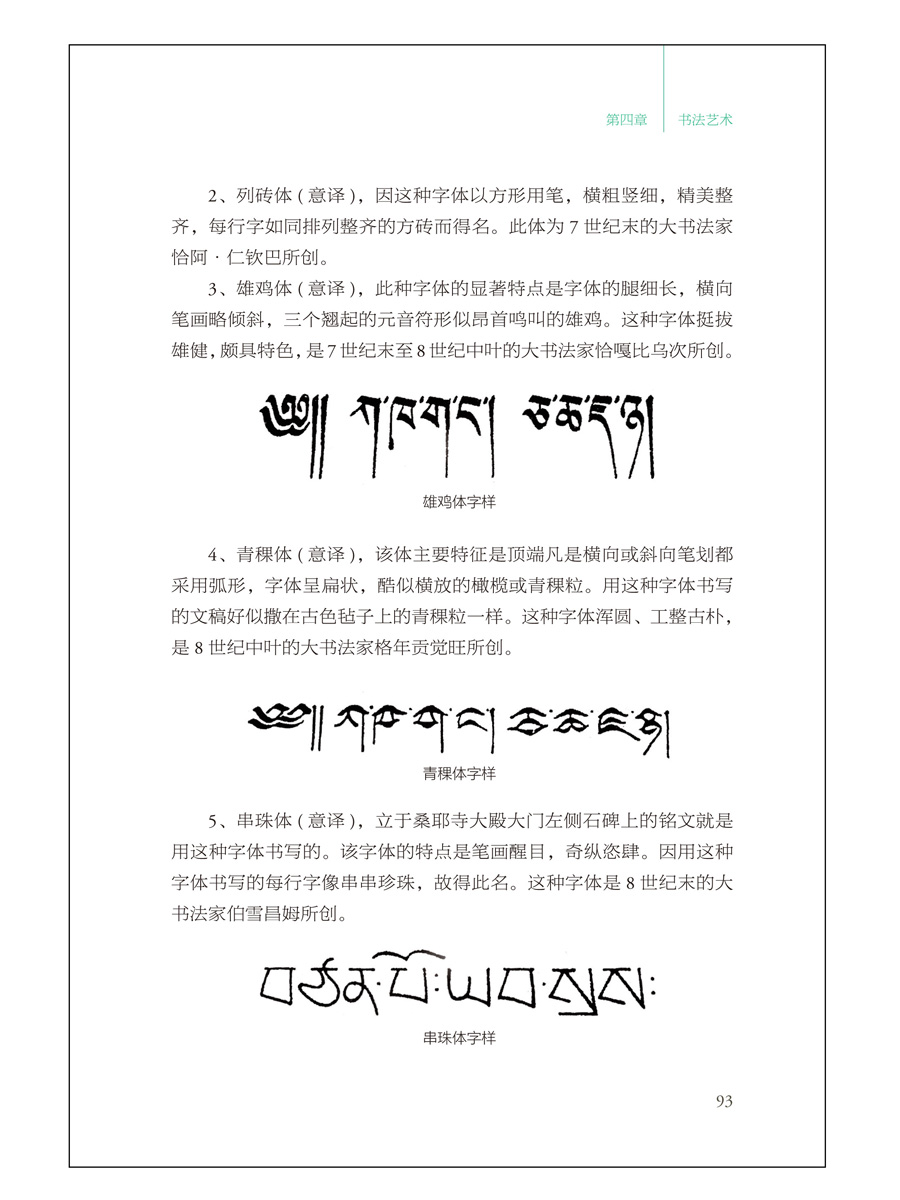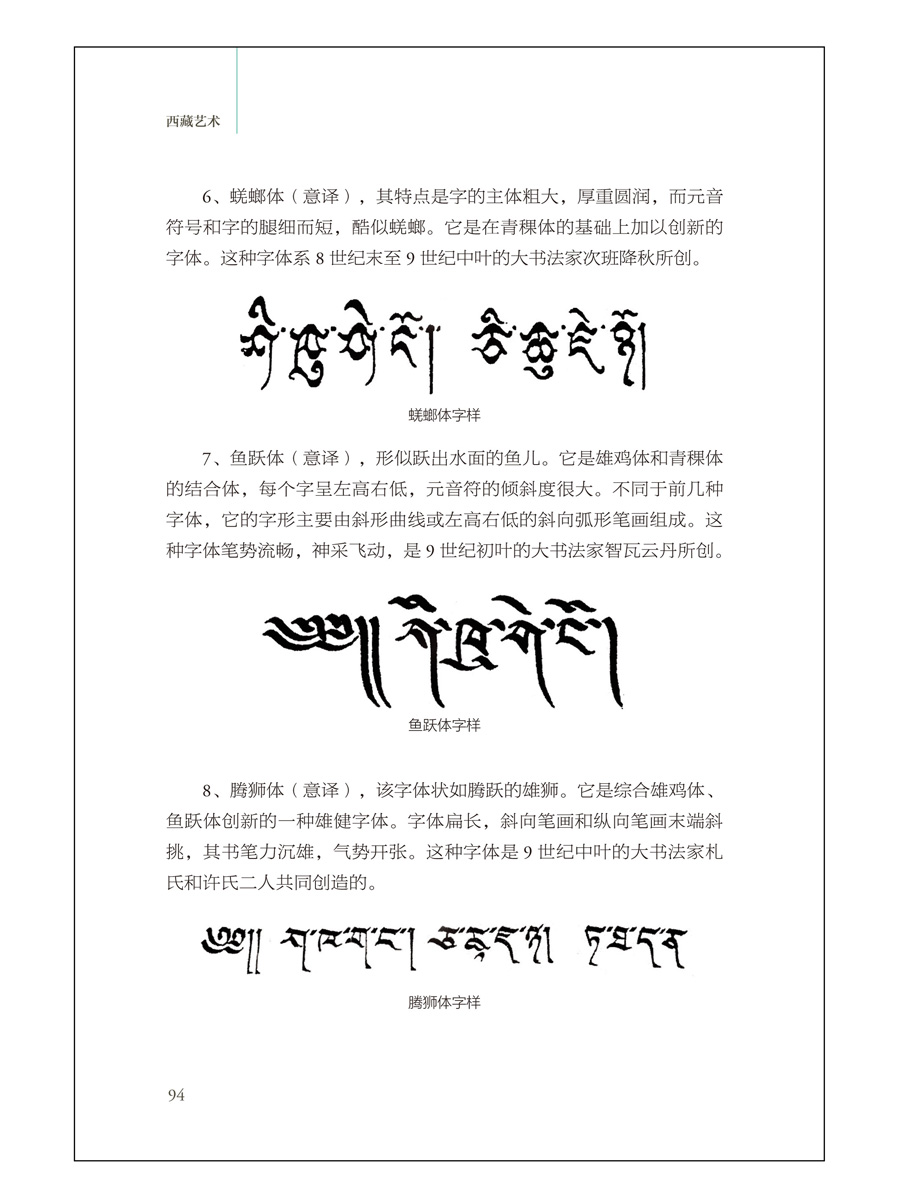
出版社: 五洲传播
原售价: 52.00
折扣价: 28.60
折扣购买: 西藏艺术
ISBN: 9787508534923

刘志群,1965年毕业于中央戏剧学院。历任西藏自治区藏剧编剧,西藏歌舞团编剧,西藏戏剧家协会副主席兼秘书长,中国戏曲学会理事。合作改编大型传统藏戏《诺桑法王》,新编大型历史藏戏《唐东杰布》等10余部藏戏剧作。主编并合作撰写《中国戏曲志?西藏卷》等。 Liu Zhiqun, who graduated from the Central Academy of Drama in 1965, has served successively as scriptwriter of Tibetan opera of the Tibet Autonomous Region, scriptwriter of the Tibetan Song and Dance Troupe, vice chairman and secretary general of the Tibetan Dramatist Association and member of the Council of Chinese Opera Society. He participated in the adaptation of the traditional Tibetan opera named Nuosang Dharma King and the adaptation of the Tibetan historical opera named Tangdongjiebu and more than 10 other Tibetan operas. In addition, he is the chief editor and co-author of the Records of Chinese Operas: Tibetan Operas.
一、民间传统歌舞发展脉络 西藏音乐古籍记载的妙音仙女是音乐歌舞的女神 。据说在远古时期,当微风吹拂南海时,海中发出了 悦耳动听的乐音,大梵天谛听十年而不厌,如醉如痴 。久而久之,各种各样的海之声音融为一体,并化成 一尊音乐歌舞女神。 辛饶米沃执掌雍仲苯教时,在频繁举行的苯教祭 礼以及庆典场面中,有人在跳卓(鼓)舞,有人在跳噶 尔舞,有人在跳象雄苯教歌舞。 部落时代上丁二王之布德贡杰时期,随着雅砻河 谷农业生产日新月异的发展,产生了农民预祝丰收的 节日“望果节”,每逢节日,农民们都痛饮醇香的青 稞美酒,通宵达旦地尽情表演“果谐”等民间歌舞。 吐蕃时期的“阿卓”歌舞,在桑耶寺壁画上就有 所反映。 随着社会的进步,庆祝活动中产生了“载谐”或 “载鲁”等庆典歌舞,诸如迎娶大唐文成公主和尼泊 尔尺尊公主、庆贺吞弥·桑布扎新创藏文等。 到了分裂割据时期,随着吐蕃王裔的迁入,一部 分曾经在雅砻地区盛大典礼上演出的庆典歌舞“谐钦 ”开始在阿里一带盛行,与当地的民间歌舞相互融合 ,为本来就丰富多彩的阿里民间歌舞锦上添花。 拉达克王朝时期,“古格宣”歌舞以空行母化身 少女且歌且舞朝拜托林寺为内容而进入历史舞台;而 “亚巴亚玛”歌舞则是根据格萨尔王的传奇故事并在 阿里日土县一带流行。 萨迦五祖之后,出现了向各地摊派歌差、表演特 定节目的现象.如“谐苏”(即迎接歌舞),就是专门 迎接萨迦赤钦时表演的歌舞。在藏巴第斯桑结嘉措时 期和噶丹颇章政府诞生后的一段历史时期里,供云噶 尔歌舞发展起来。 16世纪时,僧人创作了“古尔鲁”道歌说唱艺术 。六世达赖喇嘛仓央嘉措的“古尔鲁”道歌作品,与 其说是“道歌”,不如说是“民歌”,而且其中大部 分还是“情歌”。。仓央嘉措以西藏中部地区广泛流 行的六字一行、四行为一首的通俗民歌诗体创作了许 多脍炙人口的“古尔鲁”作品,因其通俗易懂而在民 间广为流传,其中不少的“古尔鲁”歌词被拉萨民间 艺人谱写成“囊玛”歌曲,令人耳目一新、百唱不厌 。 在西藏分治割据时期出现的“归布”琴,为本来 没有伴奏的“果谐”歌舞增添了音乐伴奏,诞生了一 种别开生面的当地人称为“扎年夏布卓”(即六弦琴 歌舞)的“堆谐”歌舞品种,并迅速在雅鲁藏布江上 游的定日、拉孜、萨迦一带流行。17世纪,这一歌舞 品种又从上述高原地带流传到拉萨等地,发展演变成 “拉萨堆谐”(“踢踏舞”)。 “囊玛”与“堆谐”相同,最初也是来自阿里三 围一带的民间歌舞。“囊玛”传到拉萨后如同“堆谐 ”一样,在城市特定的文化环境中又发生了深刻的变 化。“囊玛”音乐变成既有慢板又有快板的舞蹈音乐 ,而且在所有慢板歌舞前都有一段固定程式的前奏音 乐。18世纪,多仁·丹增班觉不仅开创了民族器乐合 奏的先河,而且还创作了《给巴桑松》《松了米央》 等“囊玛”新作。 拉萨成为西藏地方政府的首府后,不仅招来了一 批为宫廷表演歌舞的“噶尔巴”艺人,还吸引了许多 民间艺人来此献艺谋生。通过这些艺人的传播,拉萨 开始流行“堆谐”和“囊玛”歌舞。上世纪50年代, 拉萨著名歌舞艺人阿乃与益西卓玛一个伴奏、一个歌 舞,在社会上影响巨大。P13-15 西藏地处亚洲腹地,处于东方文化、南亚文化和中西亚文化相接触、撞击的交汇点上。千百年来,生活于这片高天厚土、神奇大地上的西藏人民创造了灿烂的民族艺术。西藏同祖国内地和周边地区在政治、经济和文化上的交往、交流,对西藏艺术和文化的发展产生了重大影响。西藏艺术是西藏本土文化对外来文化兼收并蓄的吸收过程的结晶。 岁月流过,人迹寥寥。无垠旷野巨岩石壁之间散布的岩画,诉说着高原先民的艺术创作,留下无限遐想……在社会发展、时代变迁与历史进步中,西藏艺术不断改变自己,不断探索新艺术形式,去记录对社会变化的反应和思考。 西藏艺术内容丰富,多姿多彩,是青藏高原的标识和徽记,体现了青藏高原民族的生活风情和审美情趣,折射出各族人民的精神风貌,展示了特有的高原风采,是西藏文化宝库的瑰丽明珠,在新的时代呈现出更加多彩的风姿。 本书以八个章节对西藏艺术的各个门类,包括艺术歌舞、宗教乐舞、戏曲艺术、书法艺术、绘画艺术、雕塑艺术等作了精当介绍。本书在特别的艺术语境下,以特有的笔触书写了青藏高原上艺术创造世界的中国故事,展示了西藏艺术形式的发展流变,为世人了解、洞察、探索青藏高原文化艺术开启了又一扇窗口,也触及了各个艺术门类及其代表作品所传递的文化遗产、民族记忆、艺术传承和保护,乃至传统与现代之间矛盾与融合等具有现实意义的问题。 Tibet is located at the innermost part of Asia and the intersection where oriental culture and cultures of the South, Central and West Asia interact and conflict with each other. For thousands of years, Tibetan people living on this grand and mysterious land have created splendid ethnic arts. The communication and exchange between Tibet and the inland areas of China and surrounding areas in politics, economy and culture have greatly influenced the development of the Tibetan art and culture. The Tibetan arts are the consequence of the process of integrating local Tibetan and external cultures. The art on the huge rock presents the art creations by ancestors living on the plateau, leaving infinite space for imagination. In the process of social development and historical evolution, Tibetan arts have been changing to explore and adopt new art forms and record responses to and thoughts on social changes. The Tibetan arts with rich content serve as a logo and symbol of the Qinghai-Tibet Plateau, reflecting life and aesthetic taste of people living on the plateau as well as spirits of the ethnic groups. The arts show unique characteristics of the plateau and have become a prominent part of Tibetan culture. They are even more charming in the new times. The book consists of eight chapters that give an introduction to Tibetan arts, covering art songs and dances, religious music and dances, opera, calligraphy, painting and sculpture art. Under specific art context, it tells stories about art creation on the Qinghai-Tibet Plateau and shows the evolution of Tibetan art forms, opening a window for readers to understand, observe and explore culture and art on the plateau. It also contains content about cultural heritage, ethnic memories and art inheritance and protection related to these arts and the representative works, and even a number of issues with realistic significance concerning conflicts and integration between traditional and modern elements.


